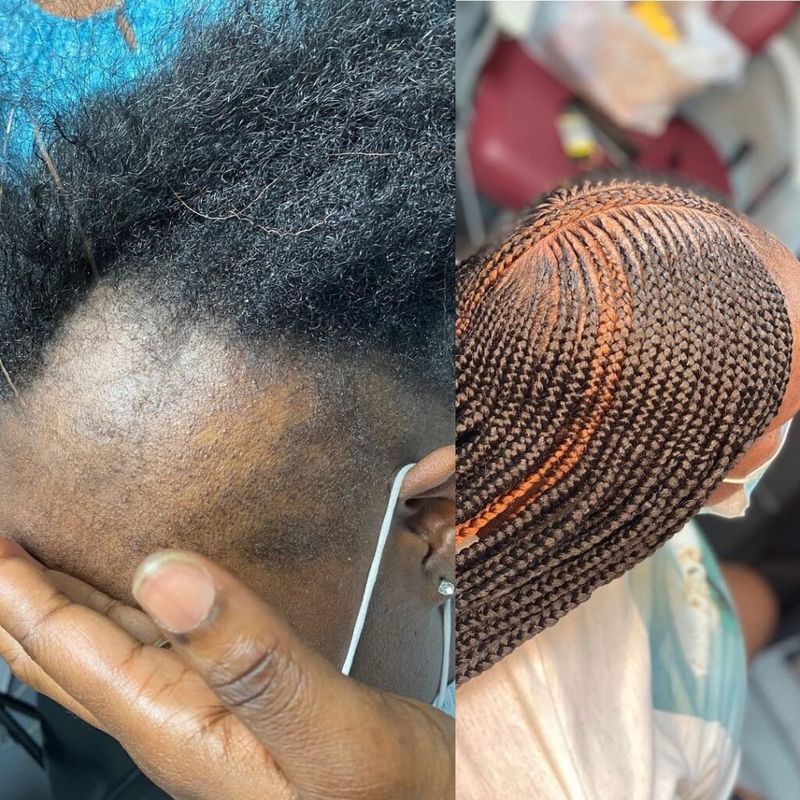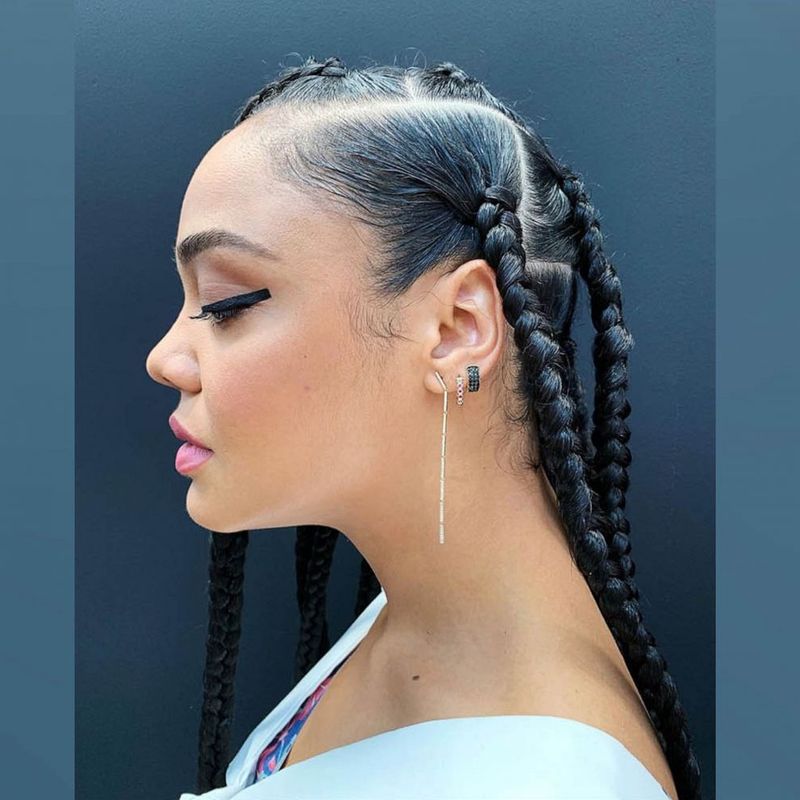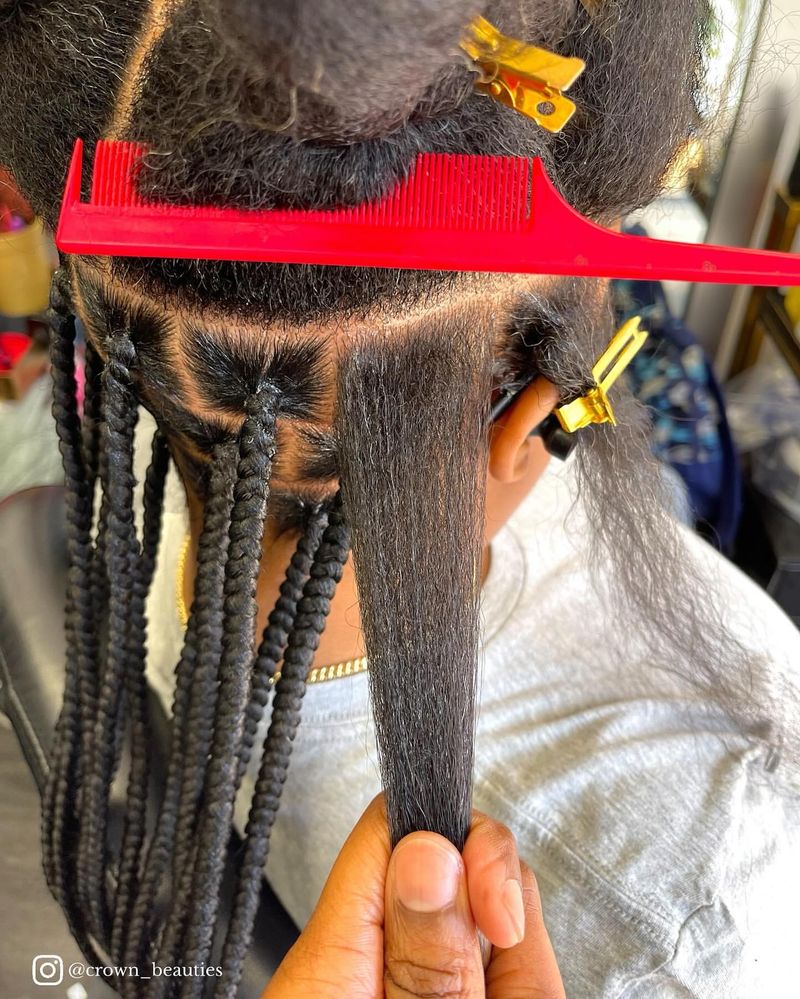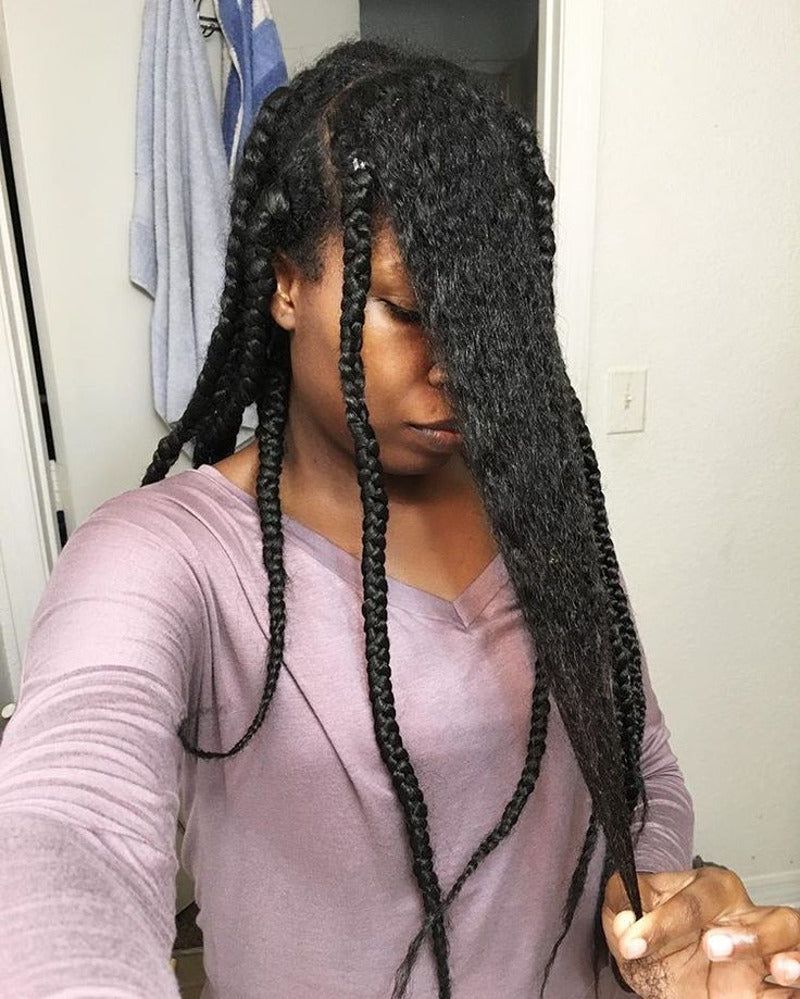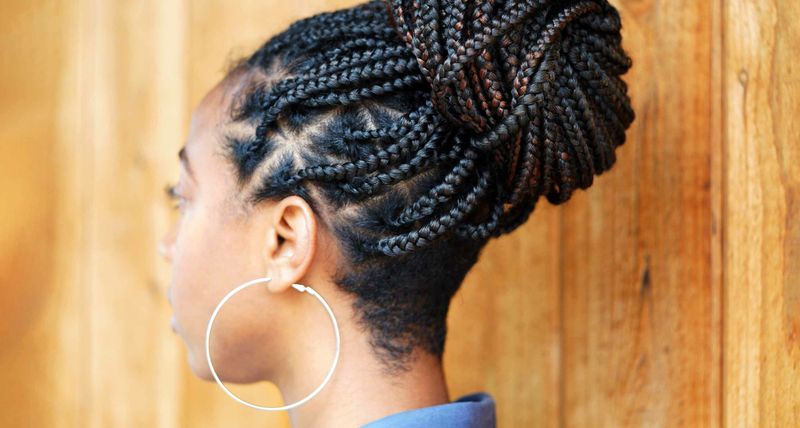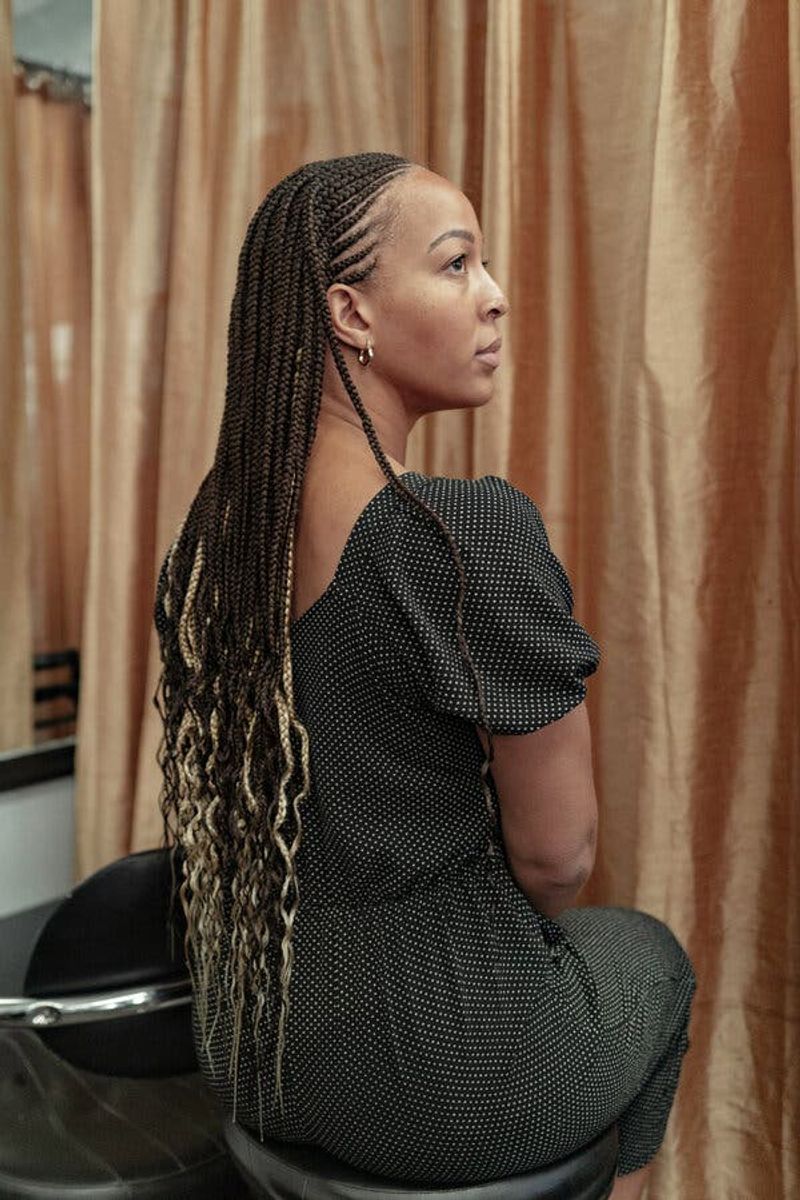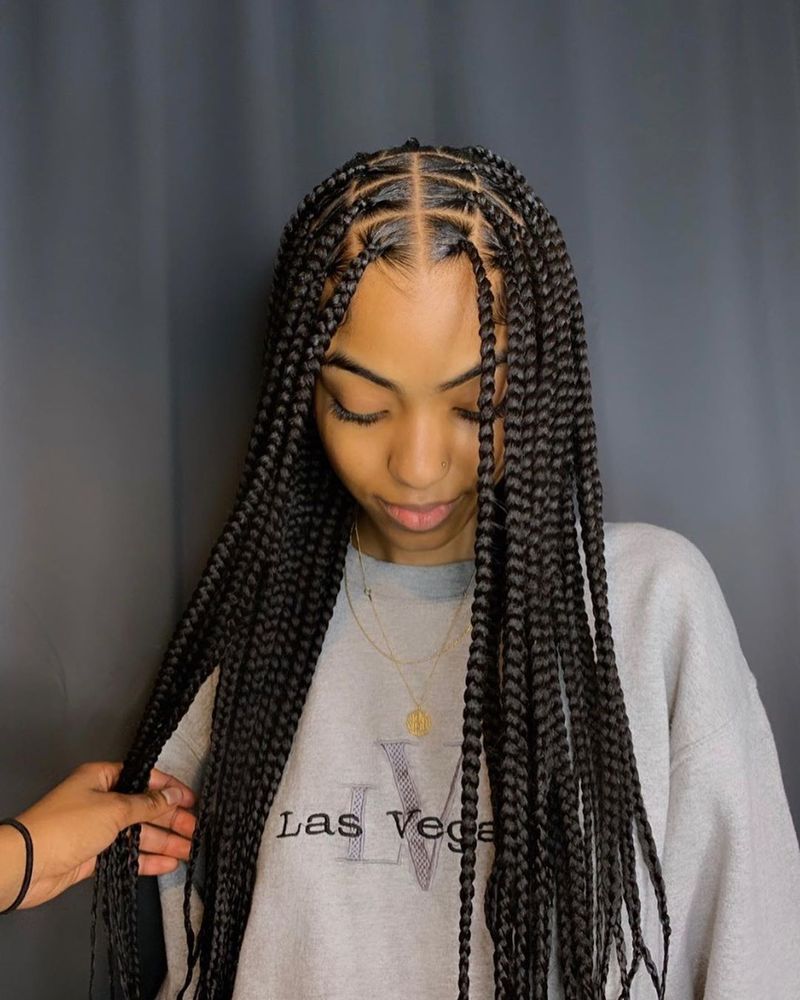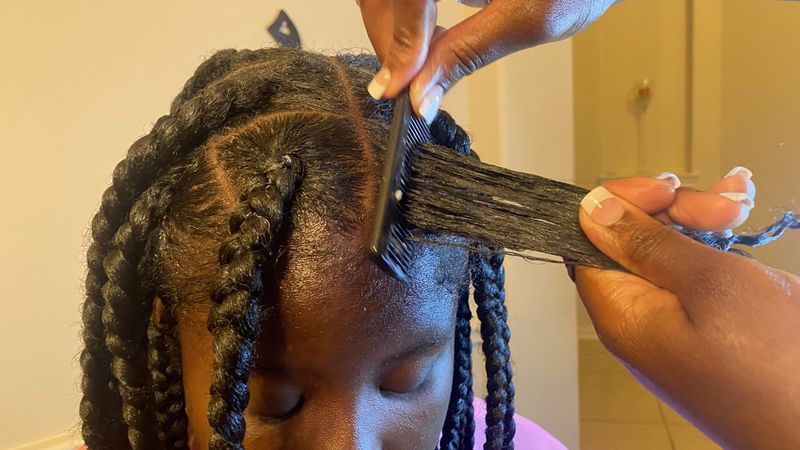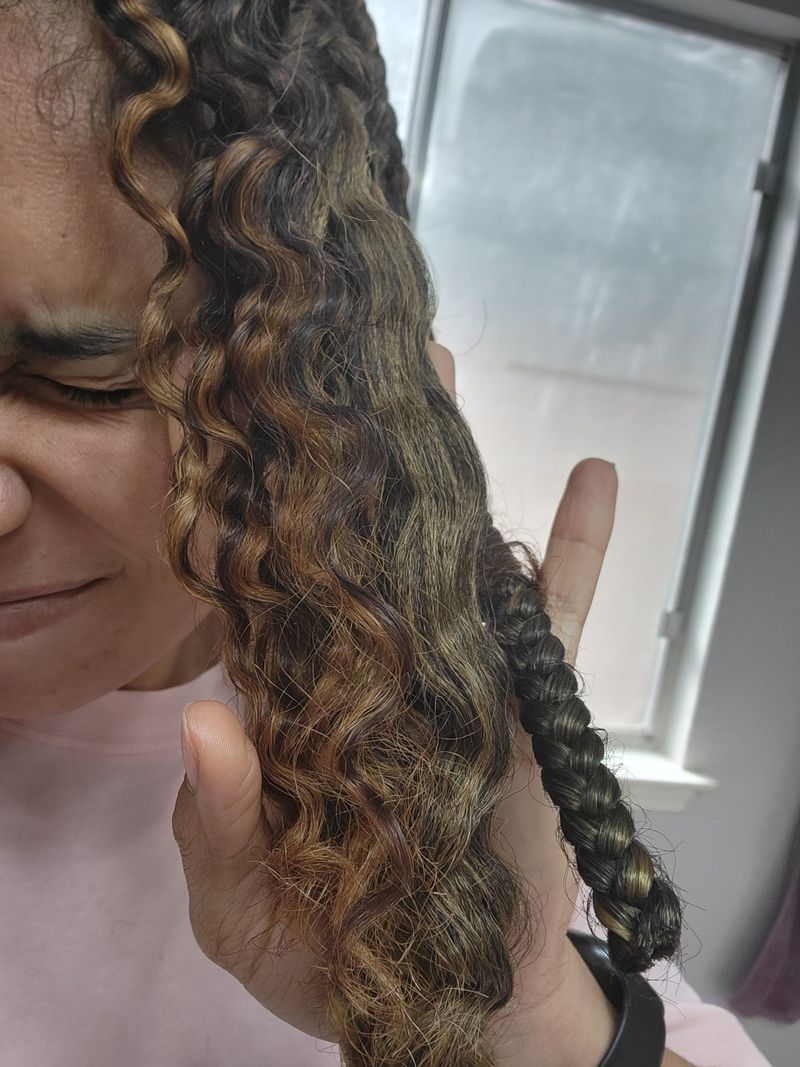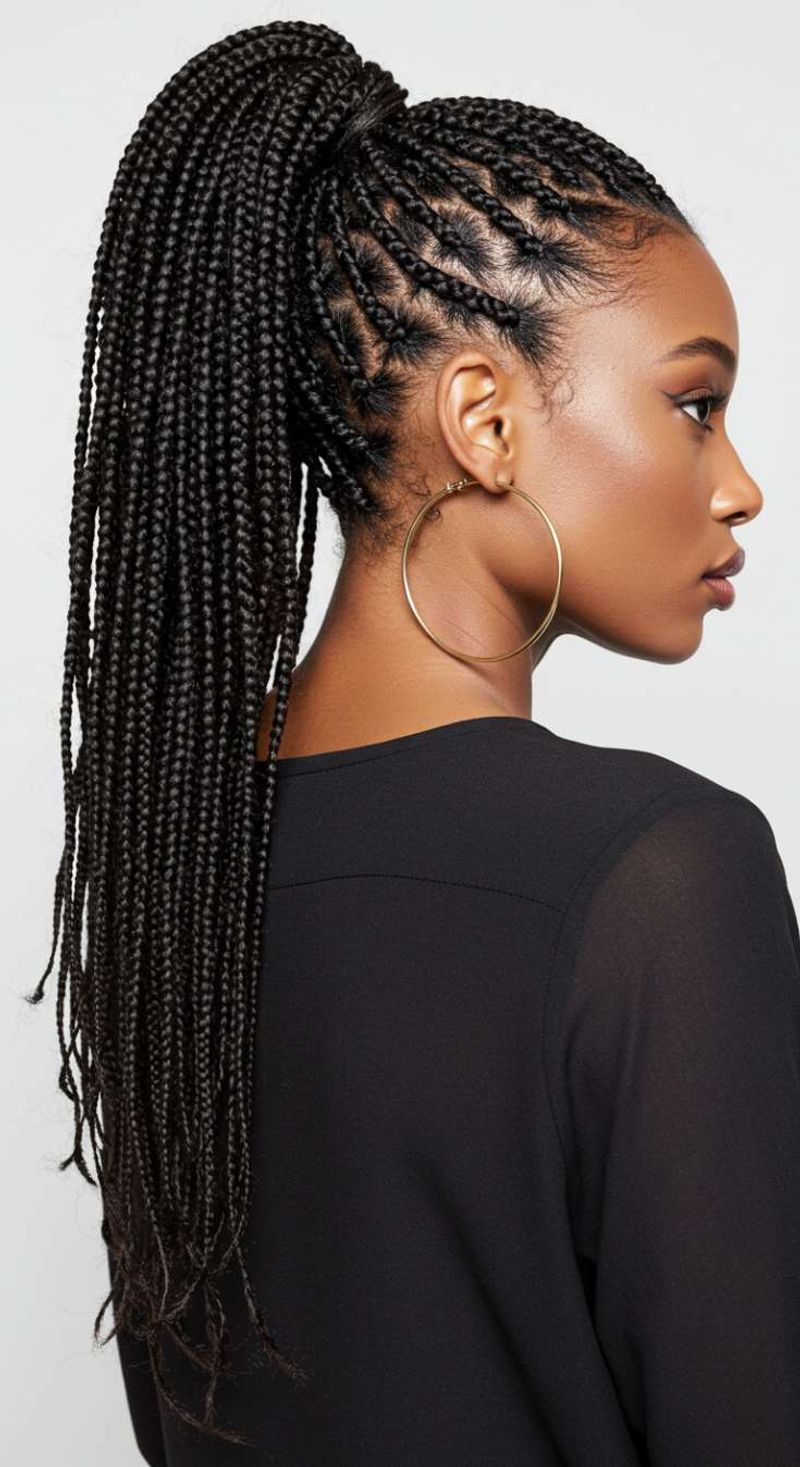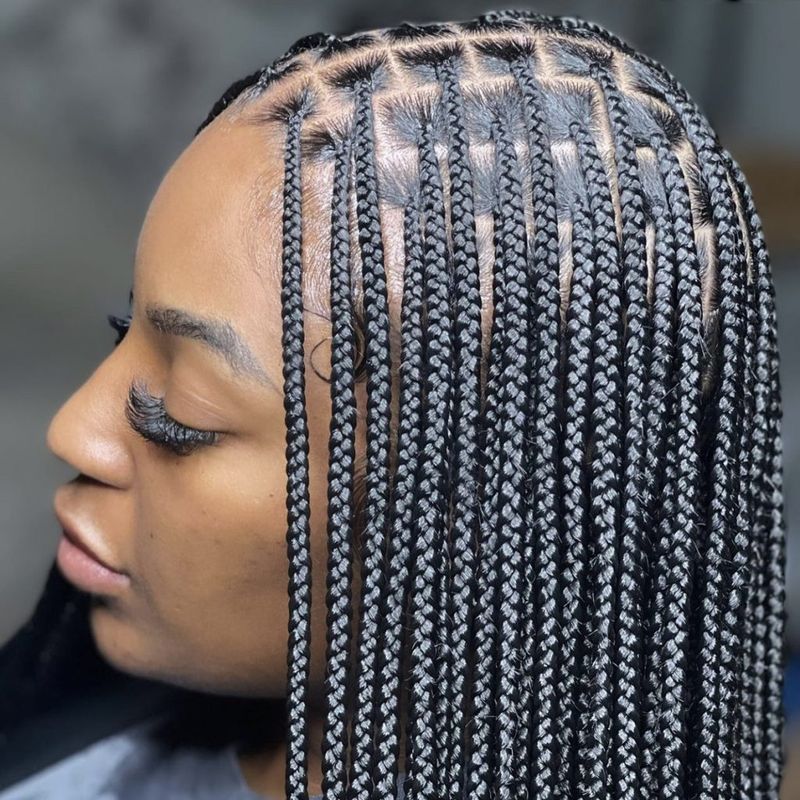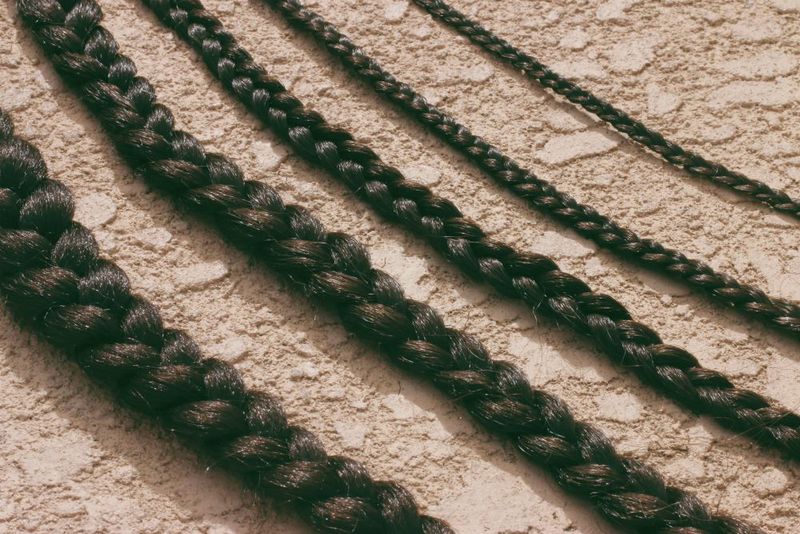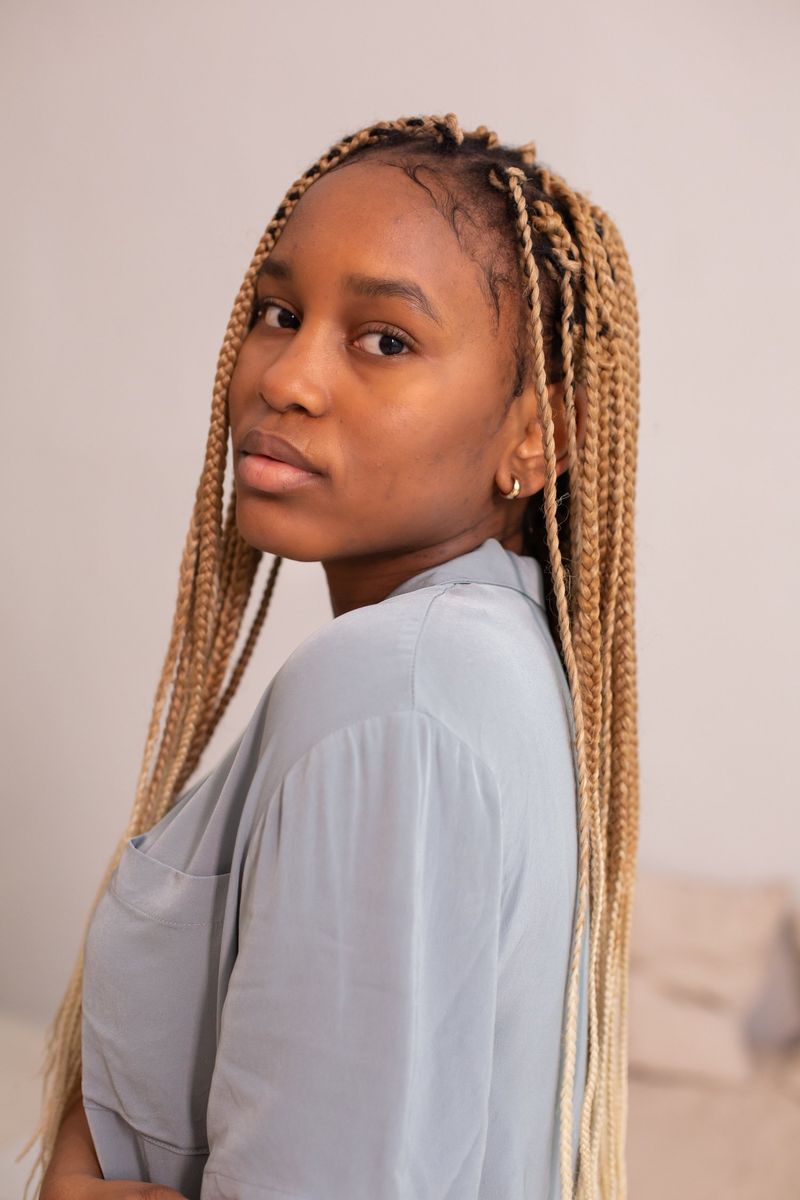Knotless braids have become super popular in recent years as a gentler alternative to traditional box braids. Many people wonder if these installation-friendly braids are actually better for hair health and growth.
Let’s explore some ways you can determine if knotless braids are the healthier choice for your unique hair needs.
1. Check Your Hairline After Removal
Your edges tell the truth! After taking out knotless braids, examine your hairline for thinning or breakage. A healthy hairline suggests the style wasn’t too harsh on your delicate hair perimeter.
Related: -15 Subtle Reasons People Stop Loving Their Hair as They Get Older
2. Feel The Weight Difference
Traditional braids feel heavier on your scalp because of how they’re installed. Try both styles and notice how knotless versions distribute weight more evenly, potentially causing less tension headaches.
3. Monitor Scalp Comfort Levels
Pay attention to how your scalp feels day-to-day. Knotless installations typically cause less itching, soreness, and inflammation because they start with your natural hair instead of adding immediate tension.
4. Look For Less Breakage
Hair breakage doesn’t lie! Count broken strands during removal time. The smoother installation technique of knotless styles often results in fewer snapped hairs when taking down your protective style.
5. Compare Installation Tension
Notice how tight your braids feel during installation. Knotless techniques begin with your natural hair before gradually feeding in extensions, creating significantly less pulling at the roots.
6. Measure Growth Progress
Track your hair growth journey with photos! Many find their hair grows more with knotless styles since there’s less stress on the follicles. Take before-and-after pictures to see real results.
7. Evaluate Washing Ease
Cleanliness matters for healthy hair! Knotless braids allow better access to your scalp during washing. Try cleansing both styles and notice how much easier it is to remove product buildup.
8. Test Moisture Retention
Hydration is key! Spritz both styles with water-based moisturizer and observe absorption. Knotless braids typically allow products to penetrate better since there’s no bulky knot blocking your scalp.
9. Rate Your Sleep Comfort
Beauty sleep shouldn’t be painful! Many report knotless styles feel more comfortable while sleeping. The absence of bulky knots at the roots means less pressure when your head hits the pillow.
10. Consult Professional Stylists
Expert opinions matter! Ask your braider which style they recommend for your specific hair type. Professionals often suggest knotless techniques for clients with finer hair or sensitive scalps.
11. Document Post-Style Recovery Time
Recovery speaks volumes! Note how long your scalp feels tender after each style. Knotless installations typically require less healing time because they don’t yank your roots during the braiding process.
12. Assess Styling Versatility
Flexibility matters for healthy hair! Knotless braids lie flatter against your scalp, allowing more styling options without added stress. Try creating high ponytails with both styles to feel the difference.
13. Examine Root Health
Root examination reveals the truth! After removal, check how your roots look compared to pre-installation. Healthy roots without excessive shedding or thinning indicate your protective style was truly protective.
14. Try Different Braid Sizes
Size experiments tell all! Knotless techniques work well in various thicknesses. Try medium knotless braids for everyday wear and jumbo styles for special occasions to see which treats your hair best.
15. Listen To Your Body’s Signals
Your body knows best! Notice if you experience headaches, neck tension, or scalp pain with either style. Knotless braids typically trigger fewer physical discomfort signals because they’re inherently gentler.


